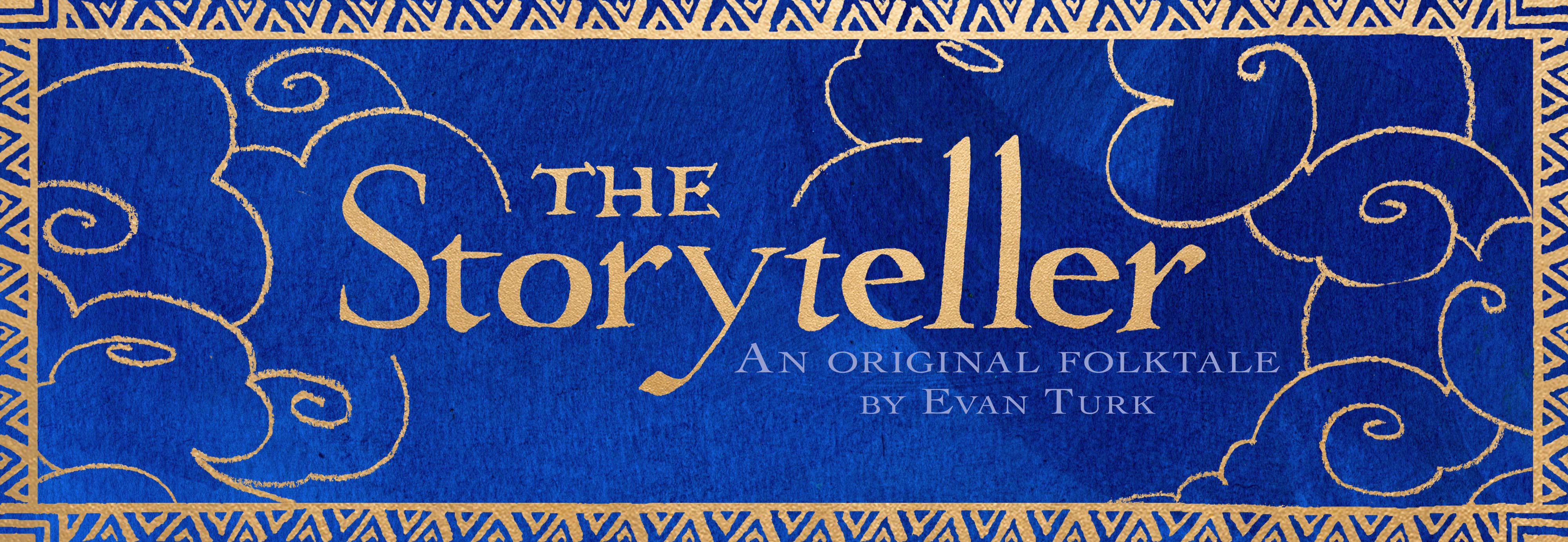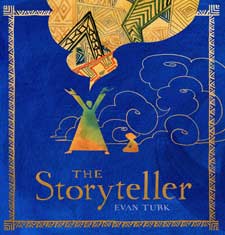7 Impossible Things Interview with Evan Turk
Julie Danielson at “7 Impossible Things Before Breakfast” interviewed The Storyteller creator Evan Turk about the creation of The Storyteller, upcoming projects, making a picture book, and much more! Take a look to see sketches, thumbnails, and even some ceramics!
7 Impossible Things Interview with Evan Turk
Read MoreThe weaver as Storyteller
In October 2014 I took a trip to Morocco to do research for The Storyteller. One of my favorite experiences was spending a day in the village of Anzal in southern Morocco and meeting the women carpet weavers there and their family. These drawings (aside from the illustrations from the book at the end) were done on-location in Anzal and the nearby Oasis de Fint.
I arrived at the village of Anzal and met, Naoual, a twenty two year old woman from the village who translated for me and told me about her village and the weaving association. The village is nestled in a valley between harsh, dry mountains. The landscape is both empty and calming. The ground and sky seem to extend in all directions for eternity. It is said that the top crossbar of a loom is often called “the beam of heaven” and the bottom bar, “the earth”, with everything between as “creation.”
Read MoreThe Art of ‘The Storyteller’: Behind the Scenes, Part 1
The process for creating ‘The Storyteller’ began in August of 2012 while at an illustration/drawing workshop with Dalvero Academy, an independent school of continuing studies in art and illustration that I have been a part of for many years. As part of a semi-annual trip with the school to DisneyWorld, one of our rigorous days was in EPCOT where I focused on the Morocco pavillion. The pavilions at EPCOT are more than just culturally inspired attractions, they are created by the governments of the countries represented as a synthesis of culture and craft to display their country to the world. Because of that, they are great places to begin learning about a culture.
Read MoreCarpets and Borders: Look for Blue Glimmer of Hope
The borders and patterns of The Storyteller (Atheneum Books for Young Readers) have much to say about the stories themselves, and all come from traditional Moroccan carpet patterns.
Elizabeth Bird of School Library Journal follows the diamonds in The Storyteller in an article for Fuse 8 Production.
“Look for a blue glimmer of hope to appear around each story!” —Evan Turk
“…after each story’s text a diamond appears. However, as the stories appear within stories within stories, the diamonds grow more elaborate and decorative. Then, as the stories end one by one, the diamonds simplify once more.
I began searching the art for more diamonds and here Turk doesn’t disappoint. If you look closely at the borders of the book, you see that the diamonds appear when there is hope and fade from blue to brown diamonds when hope dries up. As the storytelling increases the borders fill in more and more blue, just as the townspeople fill their fountains with bowl after bowl of water. Point out to a child reader the diamond motif and you are sure to be surprised by all that they find hidden in these pages.”
—Elizabeth Bird, School Library Journal
Beyond the borders filling with blue as the stories progress, there is even more to look at!
Each story has its own border in its own color:
The Sandstorm and the Storyteller: Golden Yellow (turning indigo blue)
The Endless Drought: Green
The Glorious Blue Water Bird: Brown
The Miraculous Yarn: Black
The four colors are very common in Moroccan arts, and have been related to the life cycle of a ripening date (a common fruit from date palm trees around Morocco). The fruits begin green, turn yellow, then to brown, then to black. The colors are also mentioned in association with the colors of “henna”, which is used to decorate Amazigh bride’s skin in traditional wedding ceremonies. The leaves of the henna plant and the paste they make are green. When the paste is applied, it stains the skin black, then fades to reddish brown, then finally to yellow.
(Read more about the symbolism of Moroccan carpets in the article Amazigh Textiles and Dress in Morocco: Metaphors of Motherhood by Cynthia Becker)
Each pattern is taken from traditional Moroccan carpets, as are the patterns seen on carpets throughout the book. In the image at the top of this post, you can see several different stylized types of carpets from the Atlas region. See if you can spot them in the image!
(Images from Jemaia Tifawin: Weavers of the village of Anzal)
Patterns in Moroccan carpets can mean different things to different regions of weavers, and different things to each individual weaver. The meanings of the symbols also can change over generations, so there is no one “true” meaning that applies to a symbol universally.
The diamond/lozenge pattern can symbolize fertility and the womb. It can also be a symbol of protection against the “evil eye.”
The chevron pattern can also symbolize female fertility. The story of the boy and the storyteller is all about the creation of stories and their ability to protect. The nested tales in The Storyteller all center around women and creation.
 The zig zag pattern can symbolize a snake, an arrow, and male energy, and is often around the border of a carpet, with female symbols (like the female stories in the book) in the center.
The zig zag pattern can symbolize a snake, an arrow, and male energy, and is often around the border of a carpet, with female symbols (like the female stories in the book) in the center.
The triangle pattern can symbolize a snake or male energy, and is also mostly found around the borders, surrounding female symbols.
 The diamond/lozenge with hooked corners is sometimes called the “spider” (a symbol related to weaving) and can symbolize creation and birth, like the story of the escaped princess.
The diamond/lozenge with hooked corners is sometimes called the “spider” (a symbol related to weaving) and can symbolize creation and birth, like the story of the escaped princess.

















